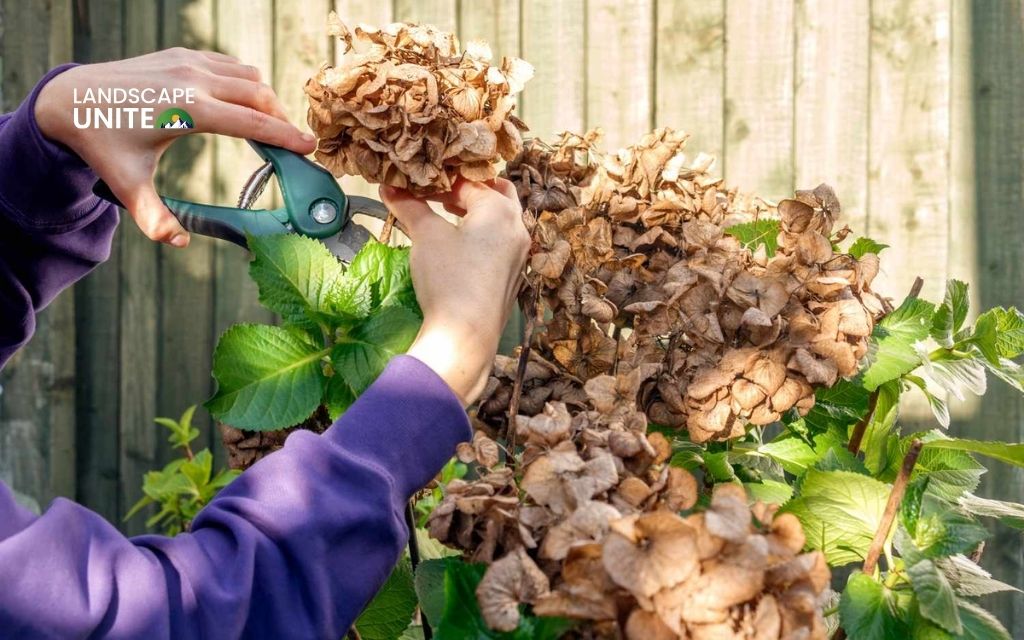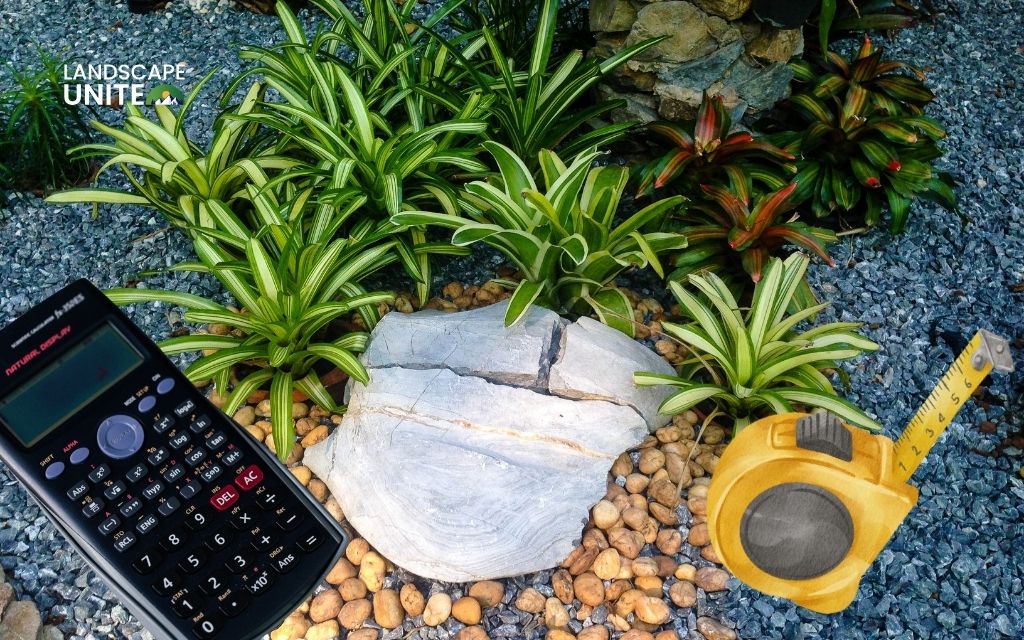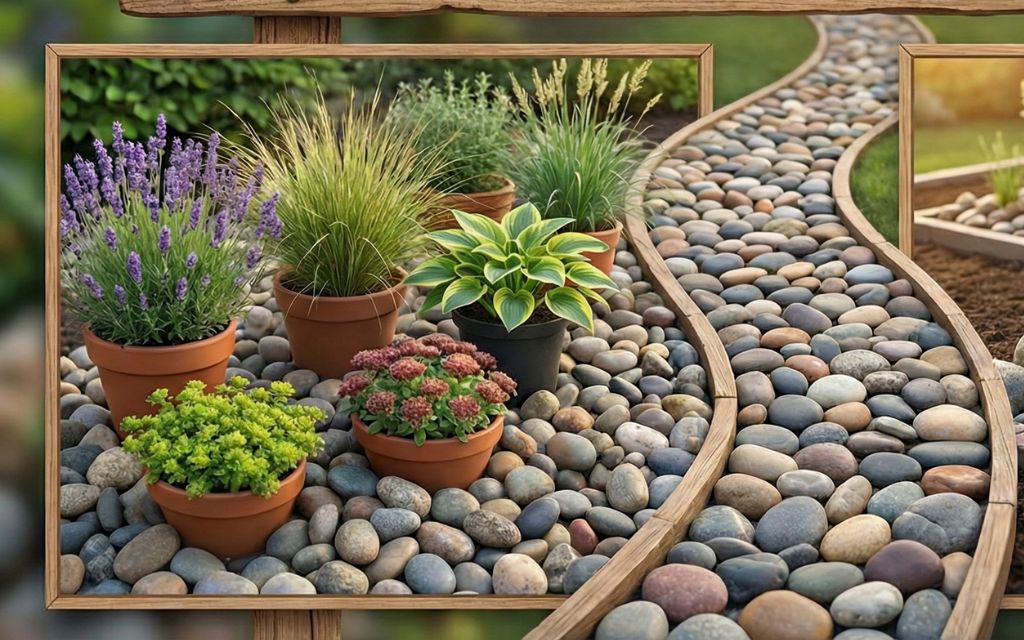Winter can be harsh on hydrangeas, especially in colder zones. Without proper care, you risk losing buds and compromising next season’s blooms. This comprehensive guide offers step-by-step on how to winterize hydrangea plants so your plants not only survive the cold but thrive and produce blooms next season.
Whether you’re dealing with delicate bigleaf varieties or hardy panicle types, proper winterization makes all the difference between a lackluster garden and one that bursts with color come summer.
Ready to give your hydrangeas the winter protection they deserve?
Let’s dive into the complete winterization process that will keep your plants beautiful and healthy year after year.
Why should you winterize hydrangea plants?
Proper winter care is essential for maintaining healthy hydrangeas and ensuring spectacular blooms next season.
Here are the core reasons to winterize hydrangea plants:
- Protect buds and stems from winter dieback: Cold temperatures, harsh winds, and freeze-thaw cycles can kill flower buds, leaving you with bare stems and no blooms in spring.
- Improve chances of blooming next season: Many hydrangea varieties bloom on old wood, so winter damage to stems means losing an entire year of flowering potential.
- Maintain plant health in cold or variable climates: Consistent protection helps plants withstand temperature swings and enter dormancy naturally without shock or stress.
- Prevent crown and root damage from freeze-thaw cycles: Repeated freezing and thawing can heave plants from the ground and damage delicate root systems, potentially killing the plant entirely.
Know your hydrangea type first
Not all hydrangeas need the same care in winter, and understanding your specific variety is crucial for successful winterization. Start by identifying your hydrangea type, as this determines your entire winter care strategy.
Bigleaf hydrangeas
Bigleaf hydrangeas (Hydrangea macrophylla) are the most sensitive to frost and require the most careful winter protection.
These popular varieties, including mophead and lacecap types, bloom exclusively on old wood, meaning next year’s flowers are already formed on this year’s stems. Any winter damage directly impacts blooming potential, making protection critical in zones 3-6.
Panicle hydrangeas
Panicle hydrangeas (Hydrangea paniculata) are naturally hardy and bloom on new wood, making them more forgiving in winter care.
Varieties like ‘Limelight’ and ‘Little Lime’ can withstand harsh winters with minimal protection, though young plants still benefit from basic care.
These robust plants typically survive temperatures well below zero.

Smooth hydrangeas
Smooth hydrangeas (Hydrangea arborescens) are cold-tolerant natives that bloom on new wood. Popular varieties like ‘Annabelle’ can handle severe winters with basic protection.
Since they bloom on current year’s growth, even if stems die back, the plants will recover and bloom normally.
Oakleaf hydrangeas
Oakleaf hydrangeas (Hydrangea quercifolia) need moderate protection and are native to warmer climates in the southeastern United States.
These unique varieties with their distinctive foliage are generally hardy to zone 5 but benefit from protection in colder areas or exposed locations.
Climbing hydrangeas
Climbing hydrangeas are generally hardy once established, but young plants may need shielding from harsh winds and extreme cold.
These vigorous vines can tolerate significant cold once mature, though protection during their first few years helps ensure establishment.
Step-by-step: How to winterize hydrangea plants
Successfully winterizing your hydrangeas requires a systematic approach that addresses each plant’s specific needs.
Follow these steps to ensure your plants survive winter and thrive in spring.
Stop fertilizing in late summer
Stop all nitrogen-rich fertilizers by late August to allow plants to naturally slow their growth and prepare for dormancy. Continued feeding late in the season keeps plants actively growing when they should be preparing for winter rest.
If you must apply fertilizer in late summer, switch to low-nitrogen formulas that won’t stimulate tender new growth vulnerable to frost damage.
Prune (only if necessary and based on type)
Pruning timing and technique vary dramatically by hydrangea type, and mistakes here can eliminate next year’s blooms entirely.
- Macrophylla varieties require special care because they bloom on old wood. Avoid pruning these varieties in fall, as you’ll remove next year’s flower buds that are already formed. Instead, limit fall pruning to removing dead, damaged, or diseased wood only.
- Paniculata and Arborescens varieties bloom on new wood and can handle light pruning in fall or late winter. Even so, limit fall pruning to basic cleanup unless structural pruning is absolutely necessary. Major reshaping is better done in late winter before new growth begins.
- Remove dead or diseased wood regardless of variety, as this material can harbor pests and diseases over winter. Make clean cuts just above healthy buds or stems to promote proper healing.

Mulch the root zone heavily
Heavy mulching provides crucial insulation that keeps soil temperatures stable and protects vulnerable root systems from freeze-thaw damage.
- Apply 3-6 inches of organic mulch around the base of each plant, extending to the drip line. Effective materials include shredded leaves, straw, pine needles, or well-aged compost.
- Keep mulch several inches from the stem to prevent moisture buildup that can encourage rot or pest problems. Create a donut-shaped ring that protects roots while allowing air circulation around the plant base.
- Refresh mulch as needed throughout winter, especially after heavy rains or snow that can compact or scatter the protective layer.
Wrap or cover for cold protection
Physical protection becomes essential in colder zones where temperatures regularly drop below 10°F or where harsh winds can cause additional damage.
- Use breathable materials like burlap, frost cloth, or specialized plant domes that provide insulation while allowing air circulation. These materials protect against wind damage and moderate temperature extremes without trapping moisture.
- Create sturdy support structures by building frames or cages around plants, then stuffing with dry leaves for additional insulation. This method provides excellent protection while maintaining air circulation that prevents rot and pest problems.
- Avoid plastic covers as they can trap moisture and cause more damage than protection. Plastic creates a greenhouse effect during sunny winter days, followed by rapid temperature drops that can shock plants.
Water well before the ground freezes
Adequate moisture is crucial for plant survival during winter dormancy, and many gardeners overlook this essential step.
- Provide deep, thorough watering during dry fall periods before the first hard frost. Well-hydrated plants better withstand winter stress and are less likely to suffer from desiccation damage during cold, windy periods.
- Continue monitoring soil moisture throughout fall, especially during extended dry spells. Plants need consistent moisture to properly prepare for dormancy, but avoid overwatering as frozen, waterlogged soil can damage roots.
Protect container-grown hydrangeas
Container plants face unique winter challenges and require special attention to survive freezing temperatures.
- Relocate portable containers to protected areas like unheated garages, garden sheds, or against south-facing walls that provide wind protection and moderate temperatures. Even moving containers a few feet can dramatically improve their survival chances.
- Insulate containers that cannot be moved by wrapping them in bubble wrap, burlap, or specialized container insulation materials. The goal is preventing the root ball from freezing solid while maintaining some air circulation.
- Adjust watering schedules for container plants, providing enough moisture to prevent complete drying while avoiding waterlogged conditions that can freeze and damage roots.
When to start winterizing hydrangeas
Begin winterizing hydrangeas after the first frost when plants enter natural dormancy. Starting too early interferes with the hardening-off process.
Timing by zone:
- Zone 3-5: Mid to late October
- Zone 6-7: Late October to early November
- Zone 8-9: Early November (light protection only if needed)
Look for dormancy signs like leaf drop and stem color changes before beginning winter protection.
What NOT to do when winterizing hydrangeas
Avoiding these common mistakes can mean the difference between thriving plants and disappointing springs.
- Never prune bigleaf hydrangeas in fall as this removes next year’s flower buds that are already formed on the stems. This single mistake can eliminate an entire season of blooms, regardless of how well you protect the remaining plant structure.
- Don’t use plastic covers for winter protection, as they trap moisture and create conditions for rot, pest problems, and temperature extremes that can damage or kill plants. Plastic also doesn’t breathe, leading to fungal issues during mild winter periods.
- Don’t fertilize after September with nitrogen-rich fertilizers, as this stimulates tender new growth that cannot harden off before winter arrives. Late-season growth is extremely vulnerable to frost damage and can weaken the entire plant.
- Don’t skip watering before frost even if natural rainfall seems adequate. Plants entering dormancy with insufficient moisture are more susceptible to winter damage and may struggle to recover in spring.

Conclusion
The key to successful hydrangea winterization lies in understanding your plant’s unique needs and timing your care appropriately. Whether you’re protecting delicate bigleaf varieties or providing basic care for hardy panicle types, following these proven steps ensures your hydrangeas get the cozy winter rest they deserve.
Remember that proper winterization is an investment in next year’s garden beauty. The time you spend now protecting buds, roots, and stems directly translates to spectacular blooms and healthy plants when the growing season returns.
Learn more about comprehensive lawn and garden maintenance in our extensive gardening library, where you’ll find expert guidance for keeping your entire landscape beautiful through every season.
Frequently asked questions (FAQs)
Do all hydrangeas need to be wrapped in winter?
No. Hardy varieties (panicle, smooth) in zones 6-9 only need mulching. Bigleaf hydrangeas and plants in zones 3-5 require wrapping. All container plants need protection regardless of variety.
Can I prune hydrangeas in fall if I’m in a warm zone?
Never prune bigleaf hydrangeas in fall – you’ll remove next year’s flower buds. Panicles and smooth hydrangeas can handle light fall pruning in warm zones, but late winter pruning is still preferred.
How do I protect newly planted hydrangeas?
Newly planted hydrangeas need extra protection for their first winter: heavy mulching, wind barriers, and covering even for hardy varieties. Water thoroughly before the ground freezes.
What if my hydrangea already died back before I protected it?
Don’t worry – smooth and panicle hydrangeas naturally die back and regrow from roots. Apply heavy mulch to protect the root system and wait until late spring to assess actual damage before pruning.


